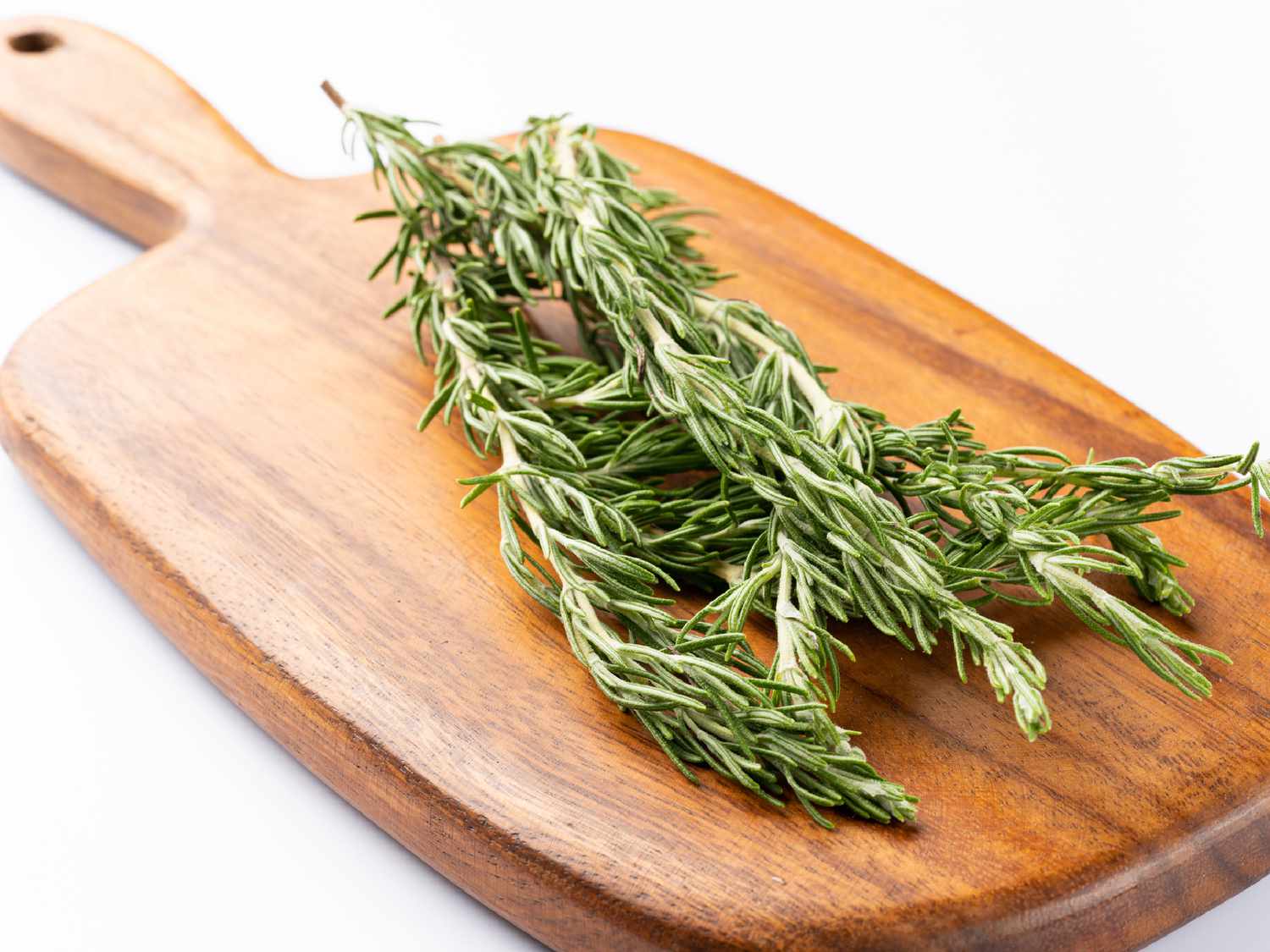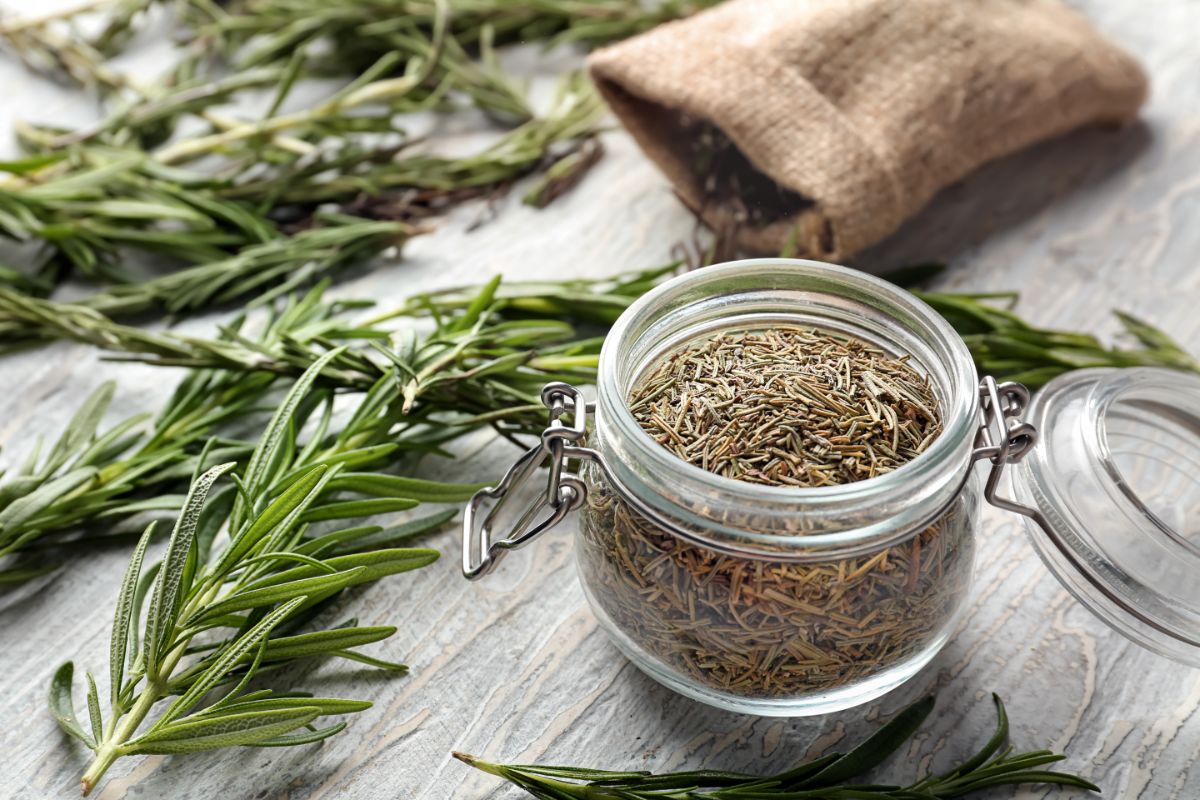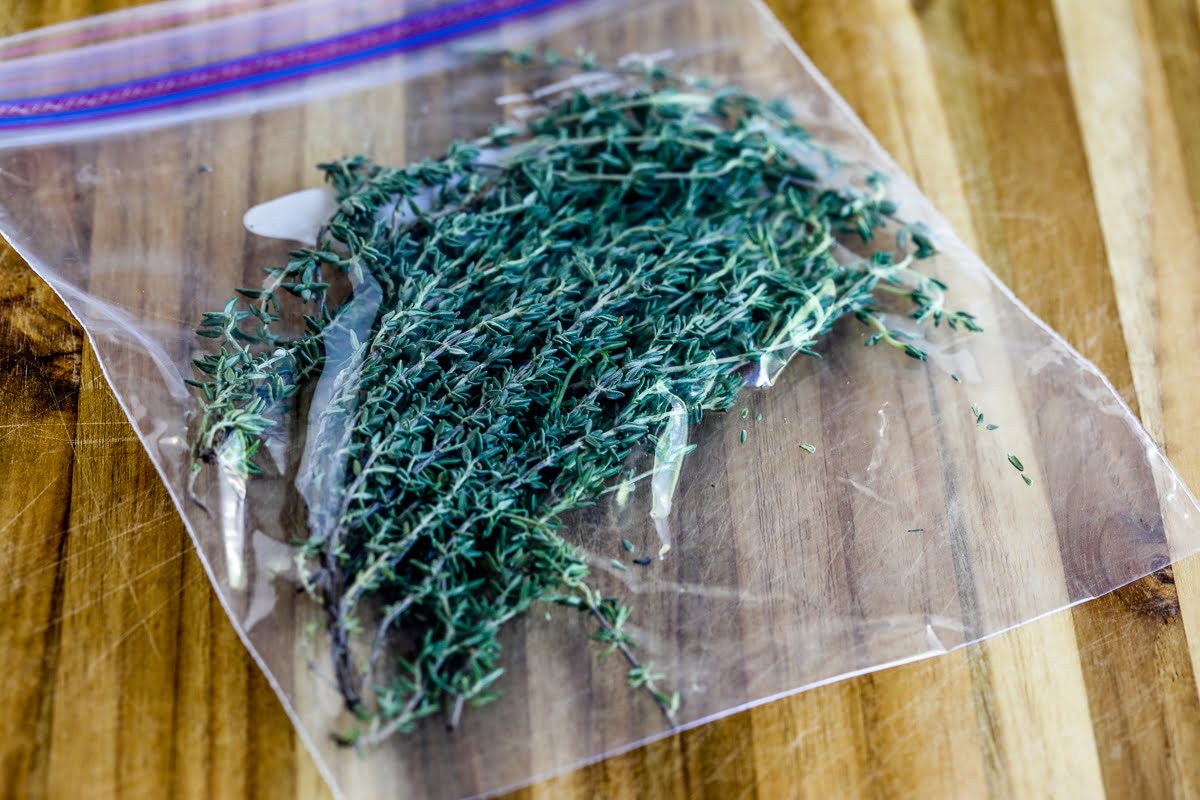

Articles
How To Store Rosemary
Modified: October 20, 2024
Learn the best ways to store rosemary in this informative article. Discover expert tips and techniques for preserving the freshness and flavor of this aromatic herb.
(Many of the links in this article redirect to a specific reviewed product. Your purchase of these products through affiliate links helps to generate commission for Storables.com, at no extra cost. Learn more)
Introduction
Rosemary is an aromatic herb that is widely used in cooking for its distinctive flavor and fragrance. Whether you have a thriving rosemary plant in your garden or have purchased a bundle from the store, proper storage is key to keeping it fresh and flavorful for as long as possible.
In this article, we will explore the best storage conditions for rosemary and provide you with practical tips on how to store it properly. We will also discuss various methods of preserving rosemary, such as freezing and drying, so that you can enjoy its delightful taste and aroma even when it’s not in season.
So let’s dive in and learn how to store rosemary to maximize its shelf life and ensure that you always have this versatile herb on hand to enhance your culinary creations.
Key Takeaways:
- Proper storage of rosemary is crucial for maintaining its vibrant flavor and aroma. Follow the best storage conditions, such as refrigeration and low humidity, to extend its shelf life and enhance your culinary creations.
- Freezing and drying are effective methods for long-term storage of rosemary. These techniques retain its flavor and aroma, allowing you to enjoy the delightful taste of rosemary in your dishes throughout the year.
Read more: How To Store Fresh Rosemary And Thyme
Best Storage Conditions for Rosemary
To keep rosemary fresh and flavorful, it is important to store it in optimal conditions. Here are some guidelines to follow:
- Temperature: Rosemary thrives in cool temperatures, so it’s best to store it in a refrigerator. The ideal temperature range for storing rosemary is between 32°F (0°C) and 40°F (4°C). Avoid placing it in the coldest part of the refrigerator, as extreme cold can cause the herb to wilt.
- Humidity: Rosemary prefers low humidity levels, so ensure that it is stored in a dry environment. Excess moisture can lead to mold or bacterial growth, which can spoil the herb.
- Airtight Container: Place the rosemary in an airtight container, such as a zip-top bag or a glass jar with a tight-fitting lid. This will help to preserve its freshness and prevent it from absorbing any unwanted odors from the refrigerator.
By following these storage conditions, you can extend the shelf life of rosemary and maintain its vibrant flavor and aroma.
Harvesting Rosemary
Before storing rosemary, it’s important to know how to properly harvest it. Here are some steps to follow when harvesting fresh rosemary:
- Choose the Right Time: Rosemary can be harvested at any time, but the flavor is most potent just before it blooms. It’s best to harvest in the morning when the essential oils are at their peak.
- Use Pruning Shears: To ensure a clean cut, use sharp pruning shears to trim the rosemary branches. Avoid using scissors or your fingers, as this can bruise the leaves and affect the flavor.
- Select Healthy Branches: Look for sturdy branches with vibrant green leaves. Avoid harvesting branches that are wilted or discolored.
- Trim From the Top: Start trimming from the top of the plant, cutting just above a set of leaves. This will encourage new growth and keep the plant healthy.
- Harvest Moderately: When harvesting, only take what you need. Leaving some foliage on the plant ensures that it will continue to grow and thrive.
Harvesting rosemary properly helps to maintain the health of the plant and ensures that you have fresh, aromatic herbs for your culinary endeavors.
Preparing Rosemary for Storage
Before storing rosemary, it’s important to properly prepare it to prolong its shelf life. Here are some steps to follow:
- Clean the Rosemary: To ensure that your rosemary is free from any dirt or debris, gently rinse it under cool running water. Pat it dry with a paper towel or a clean kitchen towel.
- Remove Excess Moisture: After washing, it’s crucial to remove any excess moisture from the herb. This can be done by gently patting it dry or allowing it to air dry for a short period of time.
- Separate the Leaves: Carefully remove the rosemary leaves from the stem. The easiest way to do this is to hold the top end of the stem with one hand and run your fingers firmly down the stem in the opposite direction of the leaves. The leaves should easily come off, leaving you with a collection of fresh rosemary leaves.
- Discard Any Damaged Leaves: Before storing, discard any leaves that are wilted, discolored, or damaged. These leaves can affect the quality of the stored rosemary.
By following these preparation steps, you can ensure that your rosemary is clean, dry, and ready for storage.
Storing Rosemary Fresh
If you want to keep rosemary fresh for a longer period of time, there are a few methods you can try:
- Refrigerator Method: The simplest way to store fresh rosemary is by placing it in a plastic bag or airtight container and storing it in the refrigerator. This will help to preserve its freshness and flavor. Remember to remove any excess moisture from the leaves before storing.
- Water Method: Another way to keep fresh rosemary is by treating it like a bouquet of flowers. Trim the ends of the rosemary stems and place them in a glass or jar filled with about an inch of water. Cover the herb loosely with a plastic bag and keep it in the refrigerator. Change the water every few days to keep it fresh.
- Kitchen Counter: If you plan to use the rosemary within a few days, you can store it at room temperature. Simply place the fresh rosemary in a jar or vase with a little water at the bottom. Keep it away from direct sunlight to prevent wilting.
Remember, fresh rosemary is best used within one to two weeks. After that, it may start to lose its flavor and potency.
By storing fresh rosemary properly, you can enjoy the vibrant flavor and aroma in your cooking for an extended period of time.
Store rosemary by wrapping the stems in a damp paper towel and placing them in a plastic bag in the refrigerator. This will help keep the herb fresh for up to two weeks.
Read more: How To Store Fresh Rosemary In The Freezer
Freezing Rosemary
Freezing is a great method for preserving rosemary for an extended period of time. Here’s how you can freeze rosemary:
- Wash and Dry: Start by washing the rosemary sprigs under cool running water and patting them dry with a paper towel or a clean kitchen towel.
- Remove Leaves: Strip the leaves from the stems, discarding any woody parts.
- Chop or Keep Whole: Decide whether you want to freeze the rosemary leaves whole or chop them. Both methods work well, so choose based on your preference and how you plan to use the herb in the future.
- Flash Freeze: Spread the rosemary leaves or chopped rosemary on a baking sheet lined with parchment paper. Place the baking sheet in the freezer and let the rosemary freeze for a couple of hours, or until the leaves are firm and frozen.
- Transfer to Containers: Once the rosemary is frozen, transfer it to airtight freezer-safe containers, such as freezer bags or freezer-safe containers. Label the containers with the date and store them in the freezer.
Frozen rosemary can retain its flavor and aroma for up to six months. You can use it directly from the freezer in your recipes without thawing, although you might need to adjust the quantity slightly as frozen rosemary may be more concentrated in flavor.
Freezing is a convenient method that allows you to have readily available rosemary throughout the year, even when the fresh herb is not in season.
Drying Rosemary
Drying is another effective method for preserving rosemary and extending its shelf life. Here’s how you can easily dry rosemary:
- Harvest and Clean: Begin by harvesting fresh rosemary sprigs and removing any dirt or debris by gently rinsing them under cool running water. Pat them dry with a paper towel or a clean kitchen towel.
- Bundling: Group the rosemary sprigs together and tie them with a string or twine. Make sure the bundle is tied tightly to hold the rosemary together.
- Hanging: Hang the rosemary bundle upside down in a well-ventilated, dry area away from direct sunlight. This can be a kitchen pantry, a closet, or any place where the herb can air-dry without being disturbed.
- Patience: Allow the rosemary to dry naturally for about two to three weeks. The leaves should become crispy and brittle to the touch.
- Storage: Once the rosemary is thoroughly dried, remove the leaves from the stems and store them in an airtight container, such as a glass jar or airtight plastic bag. Be sure to label the container with the date.
Dried rosemary can be used in various culinary dishes, such as soups, stews, roasted meats, and marinades. It will retain its flavor for up to one year if stored properly in a cool, dark place.
By drying rosemary, you can enjoy its aromatic flavor all year round and add it to your favorite recipes whenever you desire.
Using Stored Rosemary
Once you have stored rosemary using the methods mentioned earlier, you can enjoy its delightful flavor and use it in various dishes. Here are some ideas on how to use stored rosemary:
- Cooking: Add dried or frozen rosemary to your favorite savory dishes, such as roasted vegetables, grilled meats, soups, or pasta sauces. The aromatic flavor of rosemary can elevate the taste of any recipe.
- Infused Oils and Vinegars: Create your own rosemary-infused oil or vinegar by adding a few sprigs of rosemary to a bottle and letting it infuse for a few weeks. The resulting oil or vinegar can be used for dressing salads or marinating meats.
- Herb Butter: Mix finely chopped dried rosemary into softened butter and use it as a flavorful spread on bread, or as a topping for grilled steaks or roasted vegetables.
- Baking: Add dried rosemary to bread dough, pizza crusts, or savory baked goods for a unique twist of flavor.
- Herbal Tea: Infuse dried rosemary leaves in hot water to make a refreshing and fragrant herbal tea. Add a touch of honey and lemon for an extra flavor boost.
Remember that the potency and flavor intensity of rosemary may vary depending on whether you are using fresh, dried, or frozen rosemary. Adjust the quantity according to your taste preferences and the desired outcome of your dish.
Experiment with different recipes and explore the versatility of stored rosemary to enhance the flavors in your culinary creations.
Conclusion
Properly storing rosemary is essential for preserving its freshness, flavor, and aroma. Whether you have an abundance of fresh rosemary from your garden or have purchased a bundle from the store, following the right storage techniques allows you to enjoy this versatile herb for an extended period of time.
By understanding the best storage conditions, such as keeping rosemary in the refrigerator at a cool temperature with low humidity, you can maintain its vibrant green color and aromatic scent. Using airtight containers or the water method can further enhance its shelf life.
If you have an abundance of rosemary, freezing or drying it is a great option for long-term storage. Freezing retains the flavor and aroma of fresh rosemary, while drying allows you to have dried rosemary at your fingertips for up to a year.
Once stored, the possibilities for using rosemary in your culinary endeavors are endless. Whether you incorporate it into savory dishes, infuse oils and vinegars, create herb butter, or even brew herbal tea, rosemary adds a delightful and distinctive taste to any recipe.
So, the next time you find yourself with a surplus of rosemary, follow these storage methods and enjoy its incredible flavors and aromas throughout the year.
Remember, the key to keeping your rosemary fresh and aromatic is to store it properly and use it in your cooking with creativity and joy.
Frequently Asked Questions about How To Store Rosemary
Was this page helpful?
At Storables.com, we guarantee accurate and reliable information. Our content, validated by Expert Board Contributors, is crafted following stringent Editorial Policies. We're committed to providing you with well-researched, expert-backed insights for all your informational needs.















0 thoughts on “How To Store Rosemary”